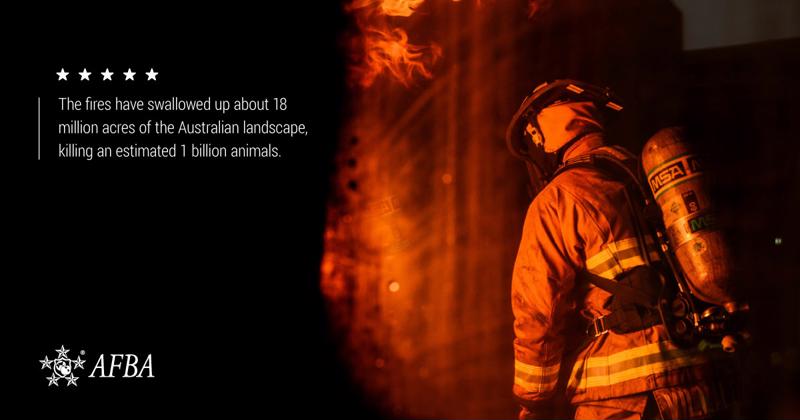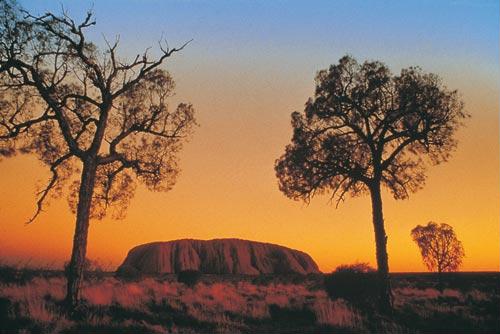For the first time in 10 years, U.S. firefighters and fire managers have been mobilized to help Australian first responders battle devastating bushfires. While the American firefighters going to Australia arrived to a warm welcome, the stakes remain high.
Bushfires have blazed across Australia since late 2019
After the hottest, driest year on record, the relentless bushfires have taken a staggering toll on the Australian continent. Since September 2019, at least 27 lives have been taken and at least 2,000 homes have been destroyed.
The fires have swallowed up about 18 million acres of the Australian landscape, killing an estimated 1 billion animals and eradicating countless native plants and wildlife habitats, according to NPR. A second surge of flames has even tormented some already scorched towns.
Due to the smoke pollution, residents far from the flames are subject to inhaling the smoke equivalent of 19 cigarettes a day. This has put a strain on emergency health facilities and is likely to cause significant physical and mental health consequences including acute lung and heart conditions as well as post-traumatic stress, The Washington Post reported.

The Australian-American partnership
The Australian Fire and Emergency Service Authorities Council requested assistance in November 2019. As of Jan. 13, 2020, around 160 U.S. fire professionals have since been involved in helping suppress the fires throughout Victoria and New South Wales.
These efforts signal an act of reciprocity. In 2018, 138 firefighters came to the U.S. from Down Under to spend a month getting California's historic wildfires under control. The 2019-2020 mobilization efforts have been coordinated by the Idaho-based National Interagency Fire Center (NIFC). Although the agency hasn't sent American firefighters to Australia since 2010, the relationship has been ongoing for 15 years, CNN reported.
According to the NIFC, additional teams will depart around Jan. 16, 2020 in response to another request. This calls for "Type I Incident Management Teams (IMTs) who specialize in managing wildland fire incidents, and other qualified personnel, such as aircraft managers, firefighting crews and chainsaw operators."
From the California wildfires to the bush
Many of those mobilized in Australia hail from California. The Golden State's fearless first responders possess not only endurance but also the experience necessary to combat complex bushfires. Despite the state and the country being across the globe, both share a similar dry climate with similar vegetation.
Eucalyptus trees in both locations are particularly hazardous; their large leaves can act like fireballs, coming loose and blowing for miles in high winds. (This species was actually brought to California by the Aussies who took part in the Gold Rush of the 1850s.)
Rober Garcia, chief of the Angeles National Forest (ANF), vouched for the expertise of the organization's select 20-person unit, which is scheduled for up to 45 days Down Under.
"They work on engine crews, hot-shot crews, aviation helicopters crews, and they often work in remote places, independently with little support," Garcia told CNN. "They are used to traveling, breaking up into small squads, [and] doing initial attack — meaning attacking fires early before they become a large fire."
Firefighters received a warm welcome in Sydney
Shane Fitzsimmons, the commissioner of the New South Wales Rural Fire Service, tweeted a video (now with over 9.1 million views) documenting the American firefighters' arrival at Sydney International Airport.
According to Fitzsimmons, onlookers "gave a spontaneous and lengthy round of applause, reflecting the gratitude and admiration we all have for their generosity."
Following a single jet lag recovery day, the American first responders underwent operational and safety briefings before joining Australian fire authorities and firefighters out in the bush. While the teams have been hand-selected, many participants volunteered for this assignment.
Jonathan Merager, an American fire prevention technician with 18 years of firefighting experience, was quick to volunteer for the assignment when the opportunity arose.
"Our Australian sisters and brothers have helped us over the years," Merager told the Los Angeles Times. "It seemed natural to reciprocate that assistance."


